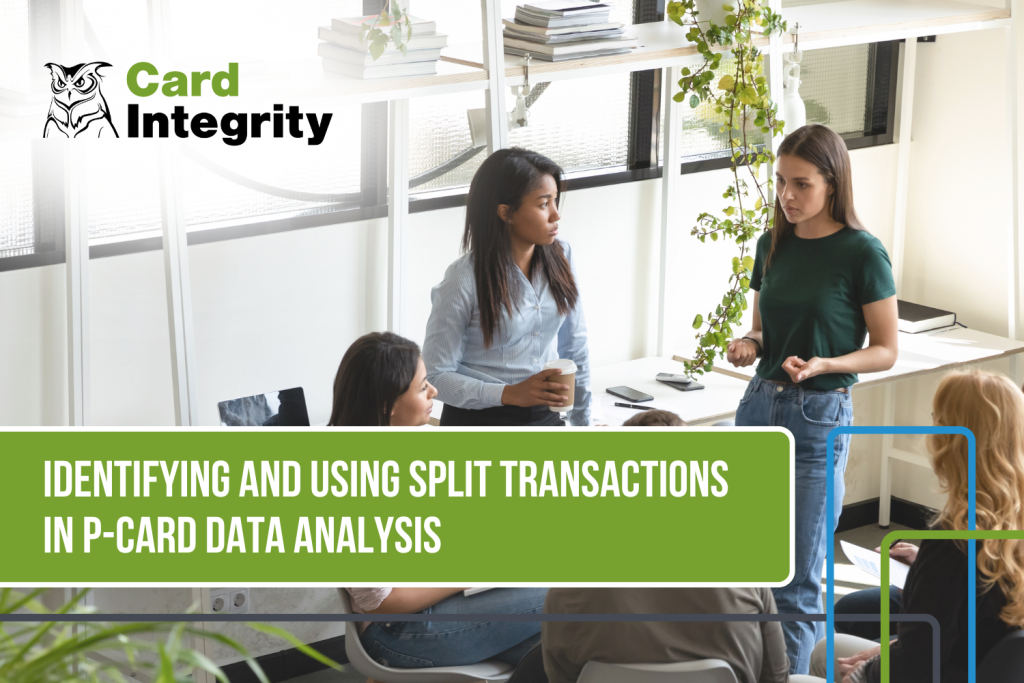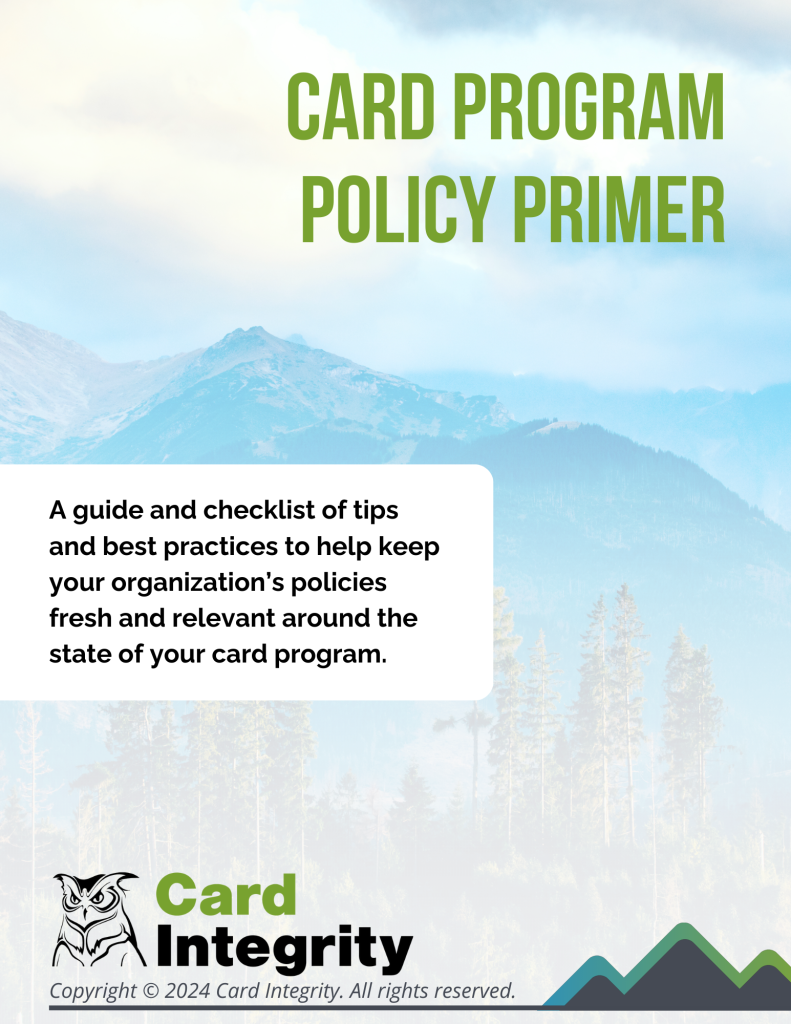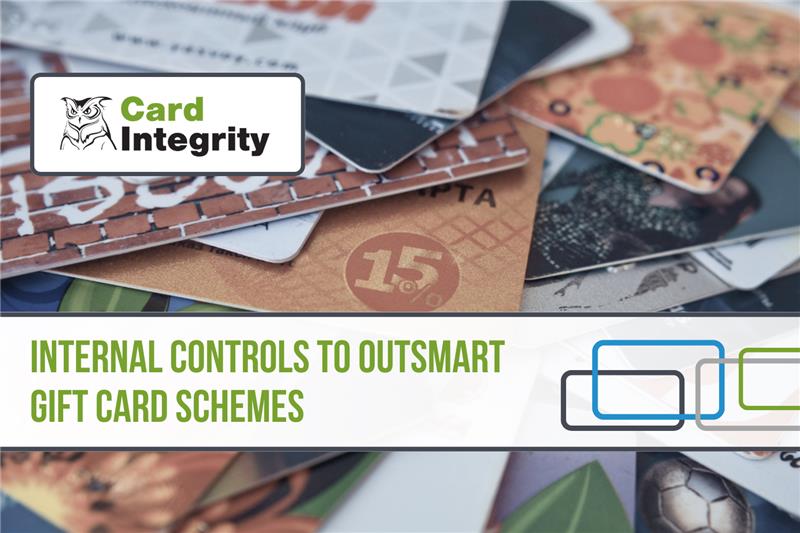With the traditional start of the school year off and running, Card Integrity presents the series “Back to Basics.” This is an opportunity for both beginners and long-time card program administrators to learn and/or get reacquainted with the elemental knowledge that lays the foundation for a successful system.
If your company is a fiscally responsible business, it regularly creates and utilizes monetary budgets to ensure that its finances are spent correctly, soundly, and appropriately.
One of the biggest benefits of a purchasing card (P-Card) program is its ability to keep employees faithful to those budgets. Just as credit and debit cards will get declined if a person hits a pre-set limit, P-Cards can be programmed not to go over certain spend limit within a single transaction. Sometimes, P-Cards are assigned limits according to merchants or categories. Or, the limit might only last for an assigned period of time (for example, the limit might be daily or monthly).
In theory, it’s a great plan. No more worries about employees staying within the set budget. The P-Card will automatically stop them in their tracks if they try to go over the spend limit for a transaction.
But there’s a loophole in the system — one that your employees, department heads, and vendors might have discovered, but you’re overlooking. That loophole is the dreaded “split transaction.” And its abuse can destroy your budgets and erode your company’s financial resources. Thankfully, split transactions are a well-understood phenomenon and internal controls exist to catch them when they happen. When those internal controls aren’t in place, though, the consequences can be severe. According to the Association of Certified Fraud Examiners (ACFE)’s 2024 Report to the Nations, it takes at least 12 months on average to detect occupational fraud. By that point, the funds may not be recoverable.
What is a split transaction?
A split transaction (sometimes also called a “split payment”) occurs when a single transaction is broken down into two or more transactions, which cuts the original total into smaller amounts. Check out the video below for more information.
As discussed in the video, split transactions can be done in several ways. One way is by using two different means of payment for a transaction (such using a paper check with the P-Card). It can also be manually manipulated — for example, if the transaction takes the form of an handwritten invoice, the transaction could be split by the vendor at a later time. Another way is by using the card for a transaction and then re-using the card after its limits reset. Or, the transaction could be divided up into different categories. To read more about the different types of split transactions to be on the lookout for, we have another article on the subject called “Understanding Split Transaction Types“.
Any party in the transaction — the cardholder, the cardholder’s supervisor or department manager, the vendor, or all of the above — could be responsible for splitting a single transaction into multiple expenses.
Typically, split transactions are made with the specific intent to mask the overspend and/or to by-pass the programmed P-Card limits. They are fraudulent and costly attempts to avoid the appearance of exceeding any authorized limits.
Identifying split transactions
Thankfully, another benefit of P-Cards is the data trail they generate, which reveals what’s really going on with these transactions—provided that the data is properly reviewed and identified.
Knowing full well that these split transactions occur, Card Integrity specifically looks for and catches them as part of its reporting and data analysis services. To gain a better understanding of other card program essentials, read more in our article about MCCs, Merchant Category Codes.
Strengthening internal controls
Organizations large and small can have issues keeping all of their data organized and thoroughly reviewed, which leads to things getting missed. Shoring up your internal controls are a great way to ensure that you catch split transactions and other violations of your policy. Card Integrity has the controls and the professional know-how to monitor your spend and protect your organization from wasteful spending.
Download our free Policy Primer, which includes findings, best practices, and a checklist of policy practices and do’s and don’ts that keep your policies fresh and relevant.
Check out our other articles in the ‘Back to Basics’ series
We’ve prepared a series of articles that take a deeper look at some topics that may seem elementary at first. Peruse them below!
Setting Goals for a More Successful Card Program
In the fourth article in Card Integrity’s “Back to Basics” series, we focus on one…
Prohibited Categories and Debarred Suppliers: Enforcing Rules and Controls
As we make our way to the third article in Card Integrity’s “Back to Basics” series,…
Double Dipping and Duplicates: Back to Basics
Double dipping and duplicate payments are the focal point of the second article in Card…
Identifying Split Transactions in P-Card Data Analysis
Blog post originally published October 2017. Updated September 2024.







